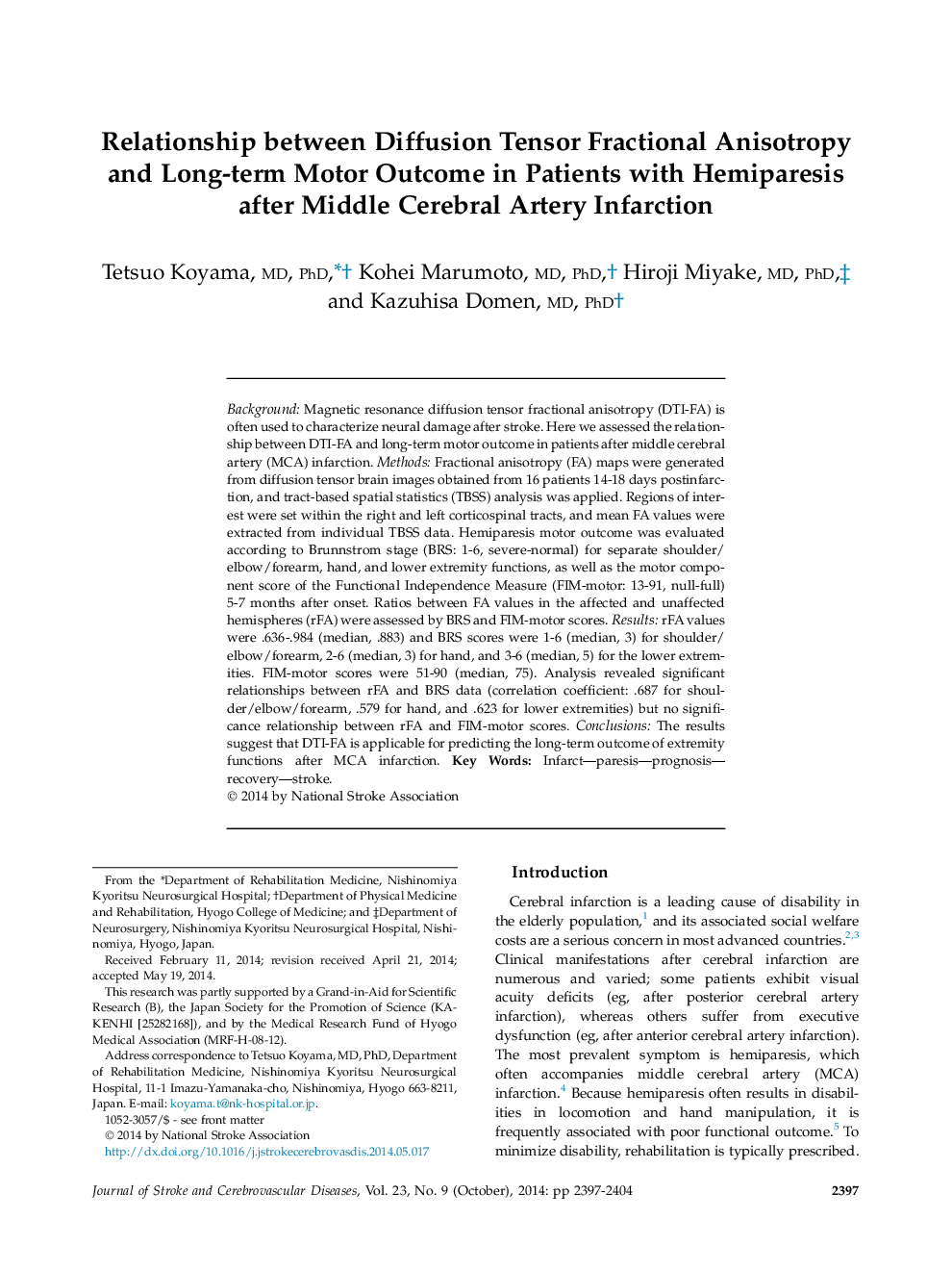| Article ID | Journal | Published Year | Pages | File Type |
|---|---|---|---|---|
| 2702508 | Journal of Stroke and Cerebrovascular Diseases | 2014 | 8 Pages |
BackgroundMagnetic resonance diffusion tensor fractional anisotropy (DTI-FA) is often used to characterize neural damage after stroke. Here we assessed the relationship between DTI-FA and long-term motor outcome in patients after middle cerebral artery (MCA) infarction.MethodsFractional anisotropy (FA) maps were generated from diffusion tensor brain images obtained from 16 patients 14-18 days postinfarction, and tract-based spatial statistics (TBSS) analysis was applied. Regions of interest were set within the right and left corticospinal tracts, and mean FA values were extracted from individual TBSS data. Hemiparesis motor outcome was evaluated according to Brunnstrom stage (BRS: 1-6, severe-normal) for separate shoulder/elbow/forearm, hand, and lower extremity functions, as well as the motor component score of the Functional Independence Measure (FIM-motor: 13-91, null-full) 5-7 months after onset. Ratios between FA values in the affected and unaffected hemispheres (rFA) were assessed by BRS and FIM-motor scores.ResultsrFA values were .636-.984 (median, .883) and BRS scores were 1-6 (median, 3) for shoulder/elbow/forearm, 2-6 (median, 3) for hand, and 3-6 (median, 5) for the lower extremities. FIM-motor scores were 51-90 (median, 75). Analysis revealed significant relationships between rFA and BRS data (correlation coefficient: .687 for shoulder/elbow/forearm, .579 for hand, and .623 for lower extremities) but no significance relationship between rFA and FIM-motor scores.ConclusionsThe results suggest that DTI-FA is applicable for predicting the long-term outcome of extremity functions after MCA infarction.
